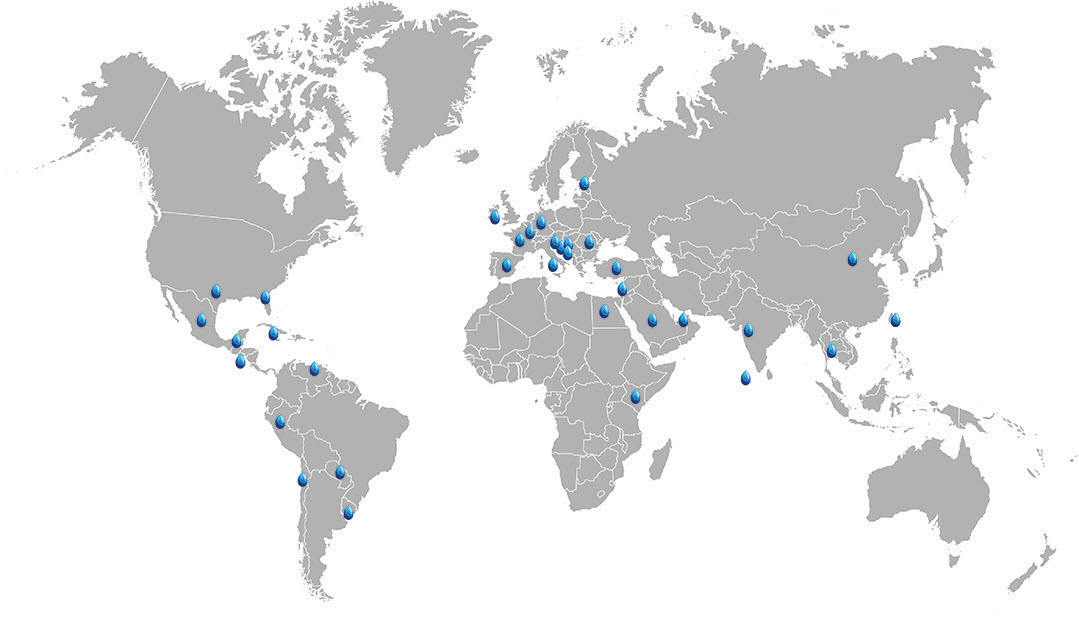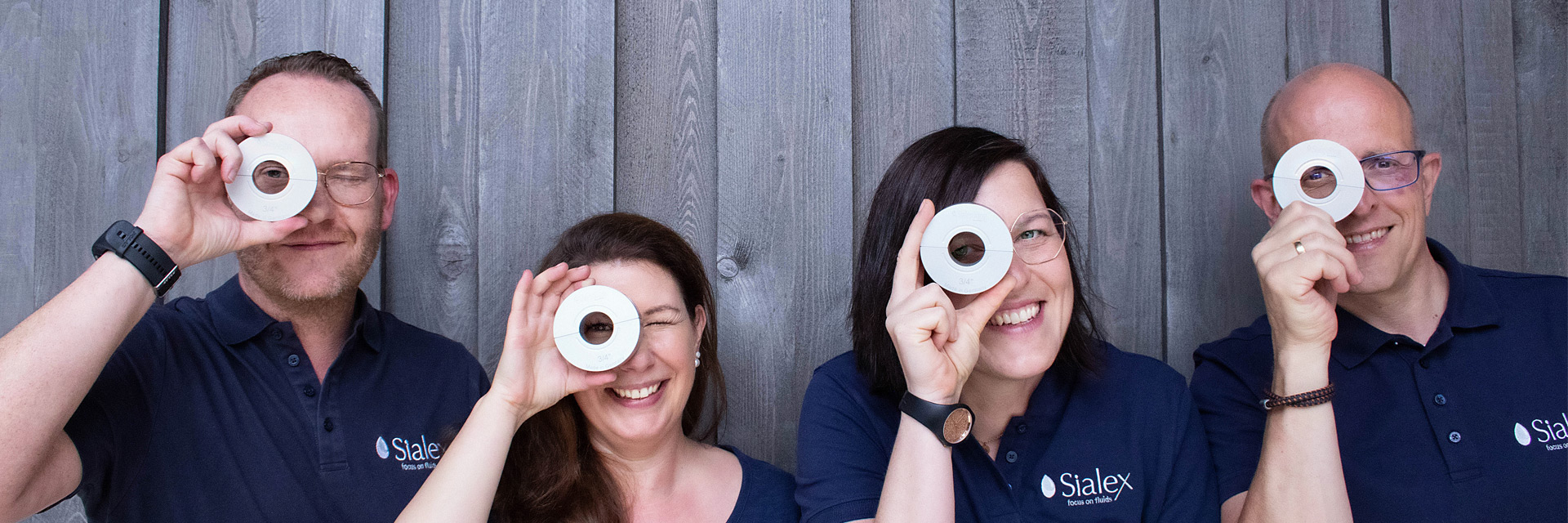
Our water experts
A water softener removes the minerals that cause water hardness: One of the most common problems, besides water quality, that homeowners usually have to deal with. Especially for private households that are located in a hard water area and are therefore confronted with “hard” water, the level of discomfort is enormous, and the prevailing problem can be felt anew every day. An example: In corresponding hard water areas, the residents suffer about calcified kettles, calcified coffee machines and dishwashers or grey veiled bathroom fittings.
In this post you will learn everything you need to consider as we address the following questions: What makes hard water harmful? Why do you need a decalcification system or do you need one at all and what role does our Sialex®Ring plays as a sustainable alternative to the traditional decalcification system in your own property?
What makes hard water harmful?
Water labeled “hard” contains large amounts of dissolved calcium and magnesium. Although hard water is not harmful to health, it is annoying because minerals are deposited on fittings and water pipes.
First of all, we should ask ourselves why hard water is harmful. Hard water can be a hindrance in daily household chores and cause a number of problems.
Negative effects of hard water.
- Limescale deposits on sanitary fittings and household appliances.
- Dry skin and hair.
- Faded clothing.
- Washbasins and bathtubs veiled in grey.
- Frequent repairs to the water pipes and the corresponding household appliances such as dishwashers, coffee machines, washing machines, etc.
- Rising water bills.
- Unsightly dishes
- Higher energy consumption (scale is a wonderful insulator!)

General information about water hardness.
The so-called hardeners in water are calcium (Ca++) and magnesium (Mg++) ions. Natural water absorbs more or less Ca++ and Mg++ ions from the ground, limestone mountains, limestone and gypsum soils and from the various layers of rock and becomes “hard”. On the other hand, water that flows through primary rock or other little weathered silicates is “soft”. Rainwater or condensation from industrial plants are also soft. The more Ca++ ions and Mg++ ions are dissolved in the water, the harder the water becomes.
How does a traditional decalcification system work?
Whole-home water softeners, as you may be familiar with them, come in a variety of sizes and styles to accommodate the specific size of your home and family. The decalcifying system is installed, for example, in the basement or in the garage, precisely where the water enters the house.
As already mentioned, the hardness of the water is decisively determined by the content of Ca++ and Mg++ ions. Therefore, these Ca++ and Mg++ ions must be reduced to get soft water. A decalcifying system exchanges these Ca++ and Mg++ ions out of the water through a chemical process using colloquial decalcifying salt and replaces them with sodium, which of course inevitably increases the sodium content in the water. In this context one often speaks of an ion exchange. The corresponding decalcification system is therefore usually referred to as an ion exchanger. It is imperative that a storage tank installed in the decalcification system is always topped up with salt.
It should be understandable for everyone that such an increase in the sodium content in the water automatically leads to negative side effects. In some regions of the world, the use of these classic decalcification systems is already regulated in order to reduce the salt pollution of the soil and water.
How much does a home decalcification system cost?
With a decalcification system for the house, the desired capacity of the water volume flowing through is decisive. If you decide on an annual water throughput of approx. 168 m³, i.e. 168,000 liters of water, for a single-family house, such a decalcification system will cost many thousands of euros.
In addition, there are the annual costs for around 150 kg of regeneration salt, plus electricity costs for the decalcification system, plus costs for the additional wastewater, as well as any maintenance and repair costs. Apart from the cost of the initial installation.
Retrofit decalcification system in the house.
If you are in a hard water region and the level of discomfort is high, the first thing to think about is retrofitting the house with a classic decalcification system in order to effectively decalcify the water and at the same time reduce the degree of hardness of the water. At the same time, this would protect many everyday household appliances such as coffee machines, steam irons, kettles, hot water boilers, dishwashers, washing machines and flow heaters by extending their respective service lives. However, many are not aware that such a decalcification system also has certain disadvantages, which can have a serious impact on people and the environment.
Disadvantages of a decalcification system.
The ongoing operation of a decalcification system has the following disadvantages:
- The minerals calcium and magnesium are removed from the water. However, these minerals are important components of water, which are of considerable importance, for example, when preparing baby food. This is always clearly pointed out when buying mineral water.
- Water softening with salt increases the sodium content in drinking water.
This increase in the sodium content in drinking water means a significant burden on nature, the environment. Reminder: Already regulated in some regions! - If a decalcification system is not used for a longer period of time, contamination can occur in the drinking water.
Such contamination in drinking water is always harmful to health and should therefore be avoided at all costs. As a measure to avoid this, regeneration of the exchange resin is definitely recommended after long downtimes. - The increased sodium content causes an increase in metal aggressiveness in drinking water and thus promotes the formation of corrosion.
The water enriched with sodium inevitably becomes more aggressive and thus has an increased tendency to corrode metal pipes. Beware of expensive burst water pipes. - A decalcification system increases the chloride content in the wastewater and thus pollutes the environment.
Such an increase in the chloride content in the wastewater means a significant burden on nature and the environment, which cannot be eliminated by municipal sewage treatment plants. - The operation of a decalcification system leads to increased water consumption due to additional rinsing processes.
The rinsing processes that are inevitable also automatically results in an undesirable increase in water consumption. - Running costs arise from salt consumption and necessary maintenance measures.
The salt in a decalcification system must be renewed at regular intervals in order to maintain the functionality of the system. Salt usually has to be brought to the basement or to the place where the system is installed in 25 kg sacks.
Descaling system with or without salt?
Since a traditional decalcification system has disadvantages, a need for a decalcification system without salt inevitably arises. Nature and the environment, in general the entire ecology, reacts very sensitively to negative influences. Likewise, we are already feeling the effects of such negative influences very clearly in the form of species extinction. These negative effects on nature and the environment are most clearly recognizable through climate change, which is visible to everyone.
Anyone who has operated a decalcification system for a long time will have to admit that such a system has numerous disadvantages at the expense of nature and the environment. An intensive study of this sensitive topic inevitably leads to the conclusion, that a decalcification system in the house causes considerable costs and also has less pleasant disadvantages for our environment.
The best solution would therefore be a system that not only solves the problem of limescale but can also do it in the most environmentally friendly way possible.
The search for a sustainable alternative.
A decalcification system in the house inevitably leads to unpleasant compromises that you have to accept in order to have decalcified water.
There have long been extremely interesting alternatives on the market that you can use with a clear conscience to uninstall your existing descaling system in the house. So you don’t necessarily have to accept the high costs for acquisition and ongoing operation and all the negative impacts on nature and the environment.
Our urgent tip: Look around for sustainable alternatives.
Sialex®Ring as an alternative to the traditional decalcification system.
Good news! This real alternative already exists on the market and is just waiting for you to take advantage of it.
Our alternative in the form of the sustainable Sialex®Ring uses well-known physical principles with the help of which the physical properties of substances such as lime in water can be changed in a positive way. Limescale no longer settles in your pipe or in your appliances such as kettles, coffee machines and dishwashers. Existing lime is also gradually and verifiably removed.
The systems made in Germany are used in private households (e.g., showers, surfaces, fittings, etc.), but can also be installed in the industrial sector.
Application examples
in the private household sector
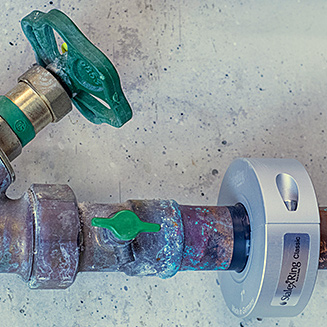
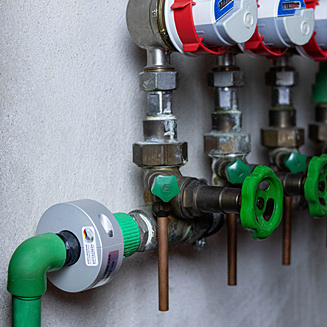
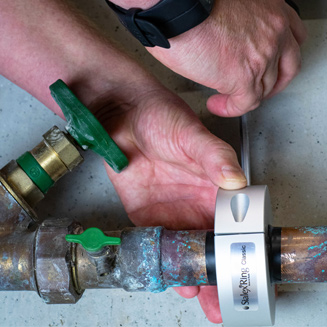
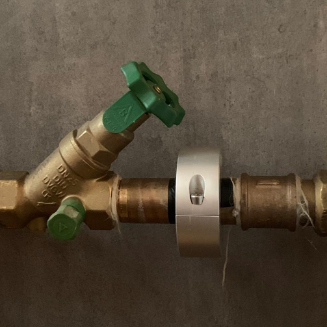
Due to its excellent properties, the Sialex®Ring offers a wide range of options for water treatment, but without the harmful addition of chemicals, without electricity, without magnetic fields. The Sialex®Ring not only reliably solves your limescale problem, but also offers a solution in the event of corrosion.
Our product, which has been tried and tested tens of thousands of times, gives a lasting protection of household appliances that are used every day. In addition, all water-carrying pipes are treated and protected in a completely environmentally friendly manner.
Some advantages that can be achieved in your own four walls with our Sialex® technology:
Reduces scale and rust
Sustainably reduces limescale residues
Protects water lines from further rust, oxidation, and pitting
Produces noticeably softer and revitalizing water
Protects washing machines, dishwashers and coffee machines
Inexpensive, economical and safe
Energy Saving – Reduce your electricity bill by an average of 8-10%
Conclusion.
Due to the already mentioned and not insignificant disadvantages of a chemical decalcification system, it is advisable to think carefully about the purchase of such a system. Especially when it comes to a decalcifying system for the renovation of an old house, because such a system is only the most sensible solution for decalcifying water from a superficial point of view, especially since these systems usually do not break down any existing limescale.
A much more effective option is to install a Sialex®Ring of a suitable size. The use of such a system has many advantages that have already proven themselves in practice tens of thousands of times over almost two decades.
This is proven by countless positive feedback from satisfied and enthusiastic customers.
If you are interested in a really sustainable water treatment method for your house, your rental apartment or even for an industrial application, then don’t hesitate and try it – find out more at www.sialexring.com/product-users/private-households/ and make an appointment now either by mail or telephone your personal consultation appointment! Especially in the field of lime we can achieve excellent results. And that in just a few weeks.
Do you still have questions about the Sialex®Ring? Contact us today and install it in your own four walls!
